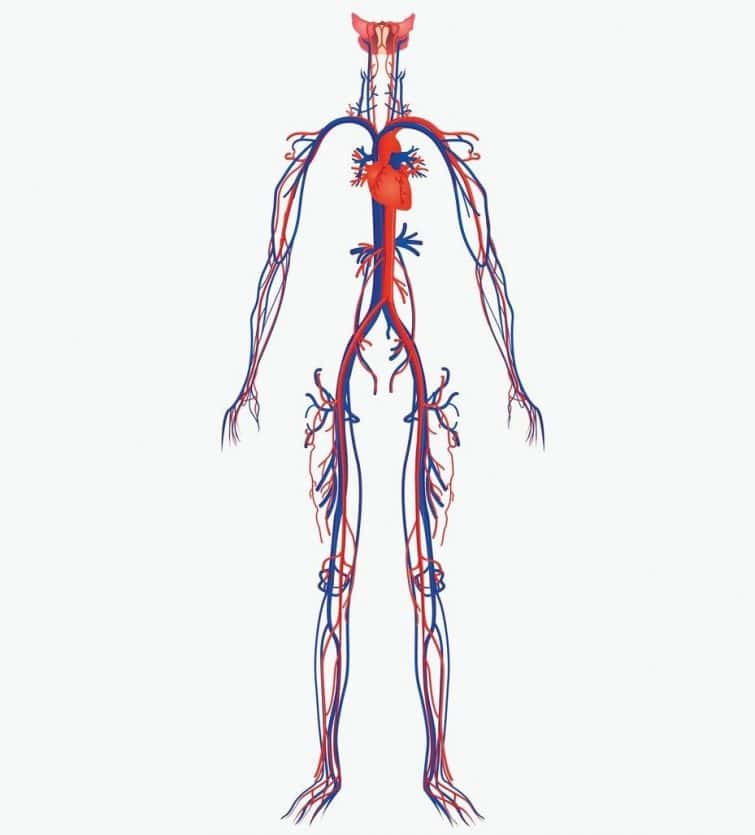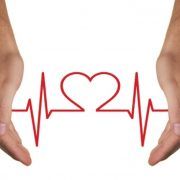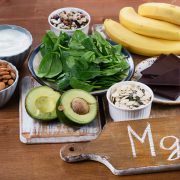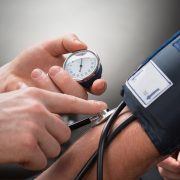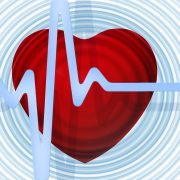Red Blood Cell Super-Highway: Navigating the Cardiovascular System
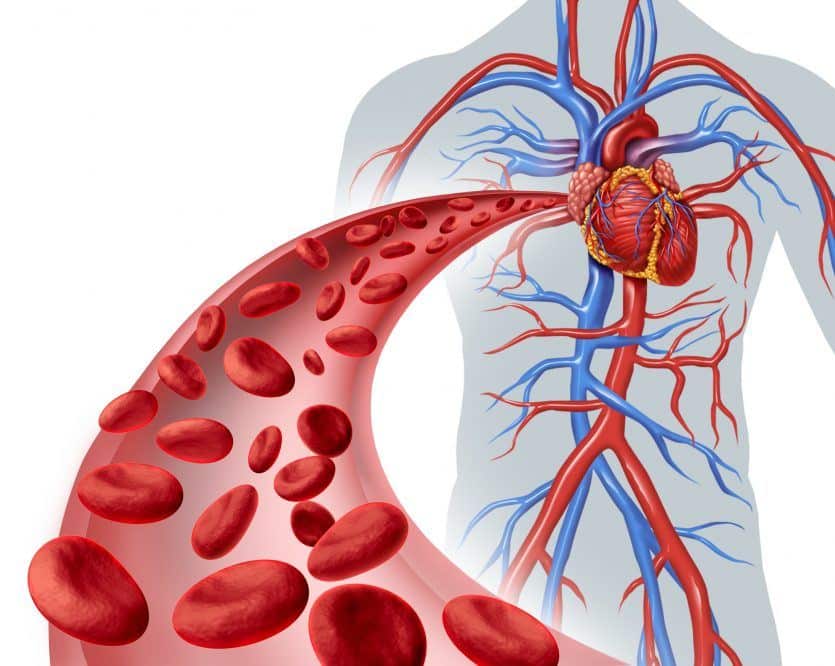
You know that lub-dub sound your heart makes. You’ve felt the pulse in your wrist. It all indicates that your body is still running. But the blood coursing through your arteries and gently flowing in your veins didn’t get there by accident. Your blood, blood vessels, heart, and lungs, all work together to bring the oxygen you breathe to the rest of your body. This relationship is known as the cardiovascular system, and it works 24/7 to keep you moving.
Your cardiovascular system is remarkable. To fully appreciate how hard it works for you, brush up on some cardiovascular vocabulary.
- Cardiovascular system: The sophisticated network of organs and blood vessels responsible for oxygenating and moving blood throughout your body. The cardiovascular system consists of the heart, lungs, and includes all blood vessels.
- Heart: A four-chambered muscle located underneath the breastbone (sternum) of your rib cage. The heart pumps oxygen-rich blood out to the body and oxygen-poor blood to the lungs. Contraction of the heart muscle is often called a beat.
- Heart rate: Also called the pulse. This is the frequency of complete heart-muscle contractions. It is usually measured in beats per minute. The average heart rate for a healthy adult is between 60 at rest and 100 beats per minute going about your day.
- Lungs: a pair of organs that sit within your rib cage and occupy most of the left and right sides. Think of the lungs as very fine network of sacs that spread your blood out to increase its surface area. Increasing the surface area allows gases to diffuse in and out of the blood (carbon dioxide out and oxygen in).
- Pulmonary: Referring to the lungs.
- Systemic: Referring to the other organs of the body, including liver, intestines, brain, kidneys, etc.
- Blood vessel: The tubes through which blood flows. There are two main types of blood vessels—arteries and veins. For most of your body, this means arteries carry oxygenated blood and veins carry oxygen-depleted blood. But in the vascular system connecting the heart and lungs, this convention is reversed.
- Blood: The red, liquid substance pumped throughout the cardiovascular system. Blood is mostly water, and is responsible for delivering nutrients to your body. It also contains many types of cells: red blood cells, white blood cells, plasma, serum and platelets.
Red blood cells (RBCs) carry oxygen and carbon dioxide in and out of the body. White blood cells are mostly involved in your immune response. Plasma is the colorless fluid that contains the fatty components of blood. Serum is the amber-colored component of blood that contains most of the proteins of the blood. And platelets are half-moon shaped, cell-like structures that are responsible for blood clotting (usually after an injury to a blood vessel).
- Blood pressure: The force of blood moving through the blood vessels, measured in mmHg (millimeters of Mercury). Clinically, blood pressure is reported as systolic pressure over diastolic pressure. Blood pressure is highest in arteries and lowest in veins.
- Diastole: Related to expansion, relaxation, or dilation.
- Systolic blood pressure: The pressure in your blood vessels when blood is actively moving through them after being force by the pumping of the heart. Normal systolic blood pressure is considered to be less than 120 mmHg.
- Diastolic blood pressure: The pressure in your blood vessels between heart beats when blood is not flowing and your blood vessels and heart are at rest. Normal diastolic blood pressure is considered to be less than 80 mmHg.
- Capillaries: The small, intermeshed networks of tiny blood vessels. Capillaries allow oxygen and other nutrients to diffuse out of blood and into cells, tissues, and organs. They also send oxygen and nutrient-poor blood back to the heart. These networks are the end of arteries and the beginning of veins.
You know your cardiovascular system is important, but it may be bigger than you think. Together, your blood vessels stretch over 60,000 miles (or 100,000 km). That means your blood vessels, placed end-to-end, could circle the globe about two and a half times.
A Closer Look at the Cardiovascular System
The simplest definition of your cardiovascular system is the series of organs that propel blood through blood vessels. But that misses some beneficial information. The cardiovascular system delivers oxygen and other nutrients to tissues, and removes waste and carbon dioxide from circulation.
That’s a lot of important jobs. They’re accomplished through a series of interconnected tubes (arteries and veins) that guide blood throughout the body. The heart is the pump that moves the blood forward. Two circuits in the cardiovascular system, the pulmonary and systemic circuits, channel blood through the heart and through your body.
The Anatomy of the Human Heart
Your heart is primarily responsible for pumping blood into and out of all areas of the body. The human heart can accomplish this huge task because of its unique construction.
It’s composed of smooth cardiac muscle cells that contract with incredible force. Some of these cardiac cells make electrical connections with nerves. When you exercise or experience a change in emotion, electrical impulses travel through your nerves to your heart. These signals can alter the rate at which heart muscles contract—or how fast it beats.
You may know that the heart is divided into four separate chambers – left and right atria and ventricles. The chambers of the heart are pouches of muscle separated by valves. They collect blood from circulation and squeeze it through the heart to the lungs or out to the body. The left and right sides of the heart mirror one another in structure. But each side is unique and performs a specialized function necessary for pumping blood.
The right side of the heart collects blood that has circulated through the body. This blood is in desperate need of rejuvenation in the form of oxygen. Before it can go to the lungs for oxygen, it must first enter the right atrium (collection chamber) and descend to the right ventricle (pumping chamber). The right ventricle is responsible for pushing the blood to the lungs for oxygen.
The left side of the heart receives oxygenated blood after it has passed through the lungs. The left atrium is the collection chamber for this oxygenated blood. Oxygen-rich blood is then passed down to the left ventricle through a one-way valve between the two chambers. The left ventricle is the strongest chamber of the heart. When the cardiac muscles of the left ventricle contract, blood is propelled from the heart out to the entire body.
Every minute, five liters (or about a 1.5 gallons) of blood is pumped through the heart—about your entire blood volume. Your heart funnels 7,200 liters of blood per day to every square inch of your body. Every pump literally brings fresh oxygen and nutrients to every cell in your body to support healthy tissue and organ function.
Blood Flow: Where Does It Go?
Understanding the path of blood flow through the cardiovascular system is similar to reading a road map. Think of red blood cells as vehicles on a busy highway. You can easily follow their path through the heart and on to the rest of the body.
Healthy, happy, oxygen rich blood cells start their journey down the cardiovascular system roadway by exiting the left ventricle of the heart. After the left ventricle contracts, the blood in this chamber gets the green light to enter the aorta through the aortic valve.
The aorta is the largest artery in the body and is the super-highway of blood transport. Blood speeds through the aorta due to high pressure and thick, muscular artery walls. Smaller arteries branch from the aorta. These are the exits where blood can hop off this busy thoroughfare and travel to different locations of the body.
The roads of blood travel shrink the further they get from the heart. Just like roads get smaller as they go from freeways, to city streets, and through individual neighborhoods, arteries branch off into smaller vessels that eventually connect to capillaries. These small vessels surround vital organs and tissues. Capillaries nourish the organs and tissues with nutrients and oxygen.
After reaching their final destination, red blood cells need to make their way back to the heart and lungs. But the journey back to the heart is much slower than the fast-paced trip via the aorta.
If arteries are the blood transport freeway, veins are the scenic route. They have slower speed limits than arteries due to lower pressure. The tight structure of arteries helps propel blood through the body quickly. Veins, on the other hand, are wider and looser. Blood takes its time traveling through veins, merging with traffic from all over the body on their way back to the heart.
All blood from the veins enters the heart through the inferior or superior vena cava. Blood traveling from the lower body is directed to the inferior vena cava—the largest vein in the body. Blood from the upper body is channeled through the superior vena cava. Each one empties into the heart’s right atrium.
This chamber collects blood and directs it through the tricuspid valve to the right ventricle. Blood is quickly ejected from the right ventricle, into the pulmonary artery through a half-moon-shaped valve called the pulmonary valve.
Once in the pulmonary artery, blood travels through the lungs, using capillary mesh to replenish oxygen stores. Blood is then funneled back to the heart through the pulmonary vein and into the left atrium. The bicuspid valve is the final gate blood must pass through to hop back on to the cardiovascular system’s super highway and complete a full circuit through the body.
Living a Heart Healthy Lifestyle
Your blood has to travel to so many nooks and crannies. It’s amazing that a healthy heart pumps without problems all day, every day, for your entire life. Even though your heart is built to go the distance, there are several things you can do to support its health. And the rest of your cardiovascular system, too.
Daily exercise is by far the best way to maintain a healthy heart and support good cardiovascular health. Requiring your heart to work a little harder during periods of exercise you can keep this important muscle toned and poised for long-term success.
Physical activity does not only make your arms and legs stronger. It strengthens your heart and cardiovascular system, too. Athletes typically have healthier hearts than those who do not regularly exercise. You don’t have to be a professional athlete, but make it your goal to exercise regularly and support your heart and cardiovascular health.
Walking daily may be the easiest exercise to keep a healthy heart. A brisk walk for 30 to 60 minutes every day can get your heart rate up to that “sweet spot.” Maintaining an elevated heart rate (between 50-85 percent of your maximum) should be your indicator of good, heart healthy exercise. For reference, a walk will get your heart rate up to 50–70 percent of its maximum. A game of tennis or a run on the treadmill pushes your heart rate up between 70 and 85 percent of its maximum.
A diet low in trans-fats and salt while high in vegetables and lean protein is also great for your heart.
Regulating your diet’s salt and unhealthy fat content reinforces your body’s ability to maintain healthy blood pressure already in the normal range. In addition to being great for your heart, a diet low in unhealthy fats and salts could be your ticket to maintaining a healthy weight.
Here’s a few things you can do. Replace salty foods with whole fruits and vegetables with lots of natural flavor. You’ll also get a lot of important nutrients—like lycopene and vitamin C—that have been shown to support a healthy cardiovascular system. And make sure the fat in your diet comes from more natural, plant sources—think nuts, olive, and coconut oil.
Keep your body’s engine running smoothly and get your blood pumping with exercise and a healthy diet.
About the Author
Sydney Sprouse is a freelance science writer based out of Forest Grove, Oregon. She holds a bachelor of science in human biology from Utah State University, where she worked as an undergraduate researcher and writing fellow. Sydney is a lifelong student of science and makes it her goal to translate current scientific research as effectively as possible. She writes with particular interest in human biology, health, and nutrition.
References
https://oli.cmu.edu/jcourse/workbook/activity/page?context=b880f13c80020ca6014d4c7646e82bcc
https://www.britannica.com/science/human-cardiovascular-system
http://www.bbc.co.uk/guides/zxts2p3
https://www.livescience.com/32213-how-much-blood-is-in-the-human-body.html
https://www.livestrong.com/article/301209-vitamin-e-high-blood-pressure/
https://www.cdc.gov/bloodpressure/measure.htm
http://sydney.edu.au/science/biology/learning/blood_composition/


